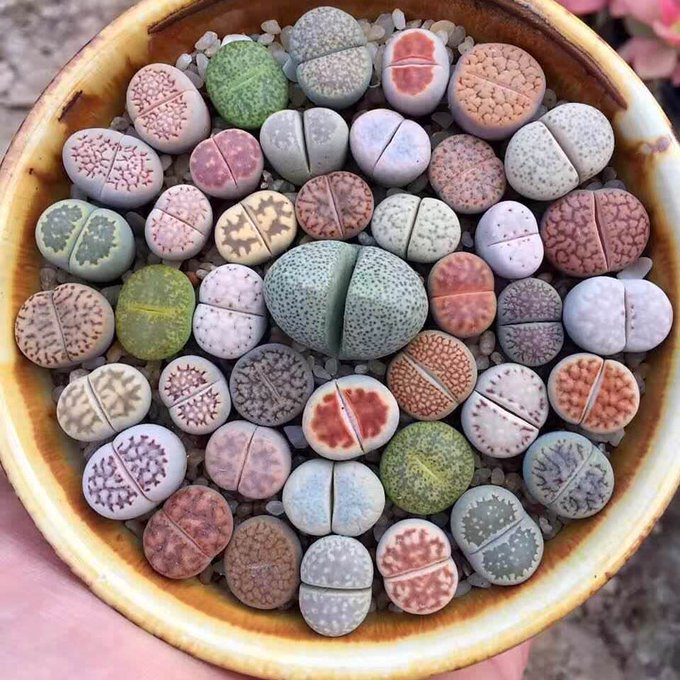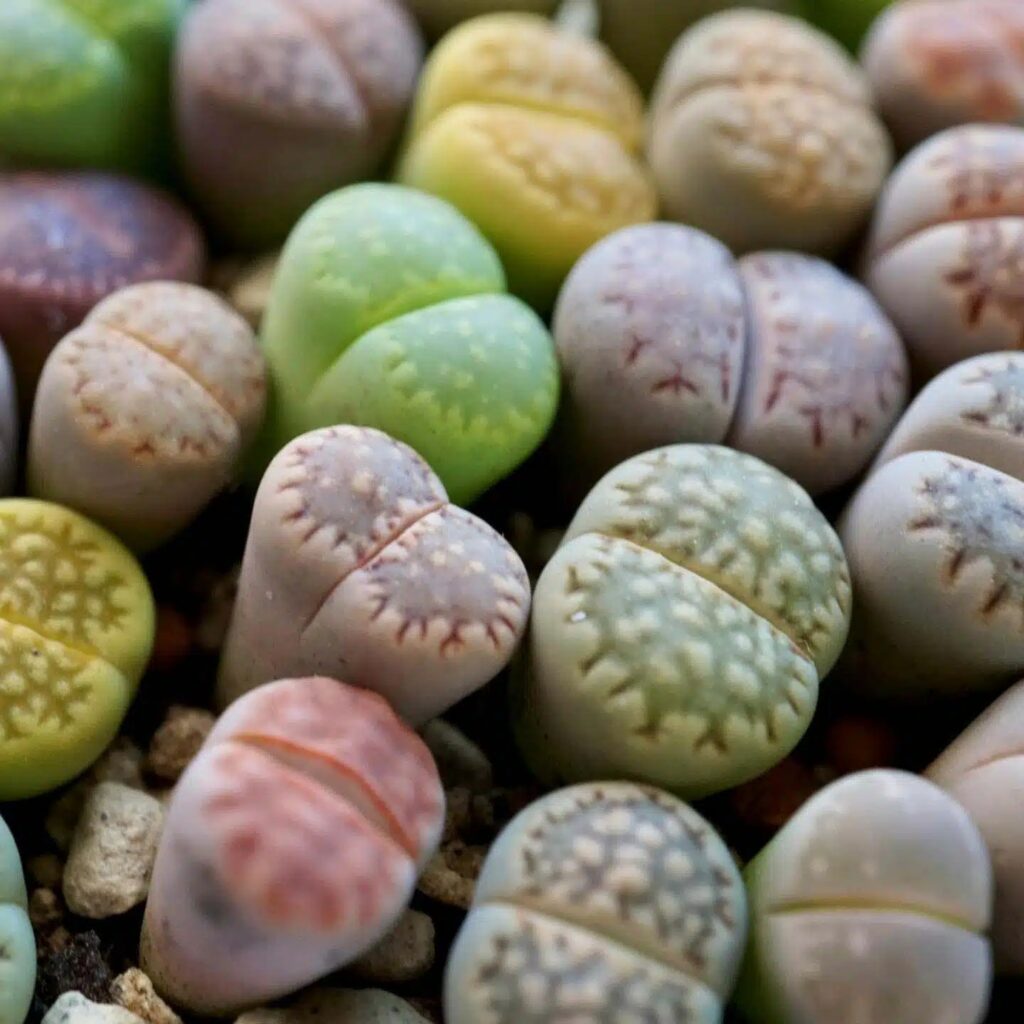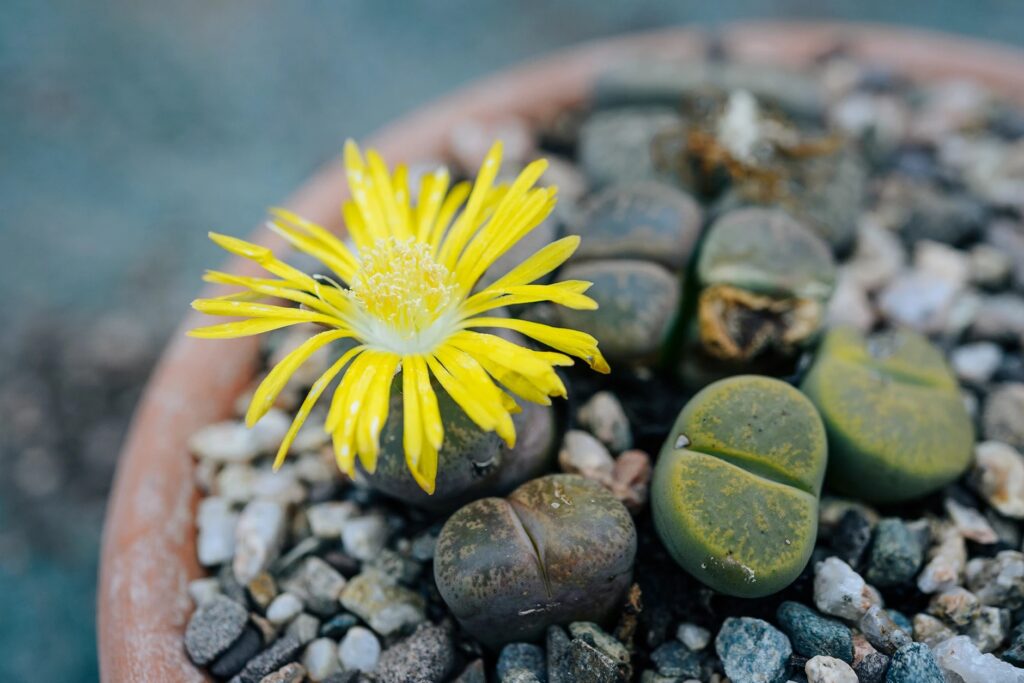
In the arid landscapes of Namibia and South Africa, where stones and sand dominate the horizon, a remarkable plant has evolved to blend in perfectly: the lithops. These succulents, also known as living stones, are masters of camouflage, their plump, fused leaves resembling the rocks and pebbles of their surroundings.


Lithops have evolved to mimic stones for two main reasons: to conserve water and to protect themselves from predators. The waxy coating on their leaves helps to prevent water loss, while their stony appearance makes them difficult to spot by hungry animals.

Lithops come in a wide variety of colors and patterns, each one perfectly adapted to its environment. Some lithops are so well-camouflaged that they are nearly impossible to see, even when you are standing right next to them.

In addition to their remarkable camouflage, lithops are also known for their unique flowering habit. Once a year, during the rainy season, lithops produce delicate daisy-like flowers that emerge from the center of their leaves. The flowers are often brightly colored, contrasting beautifully with the muted tones of the plants’ leaves.

Lithops are fascinating plants that are well-adapted to their harsh environment. Their ability to blend in with their surroundings and their unique flowering habit make them popular among succulent collectors.

Leave a Reply